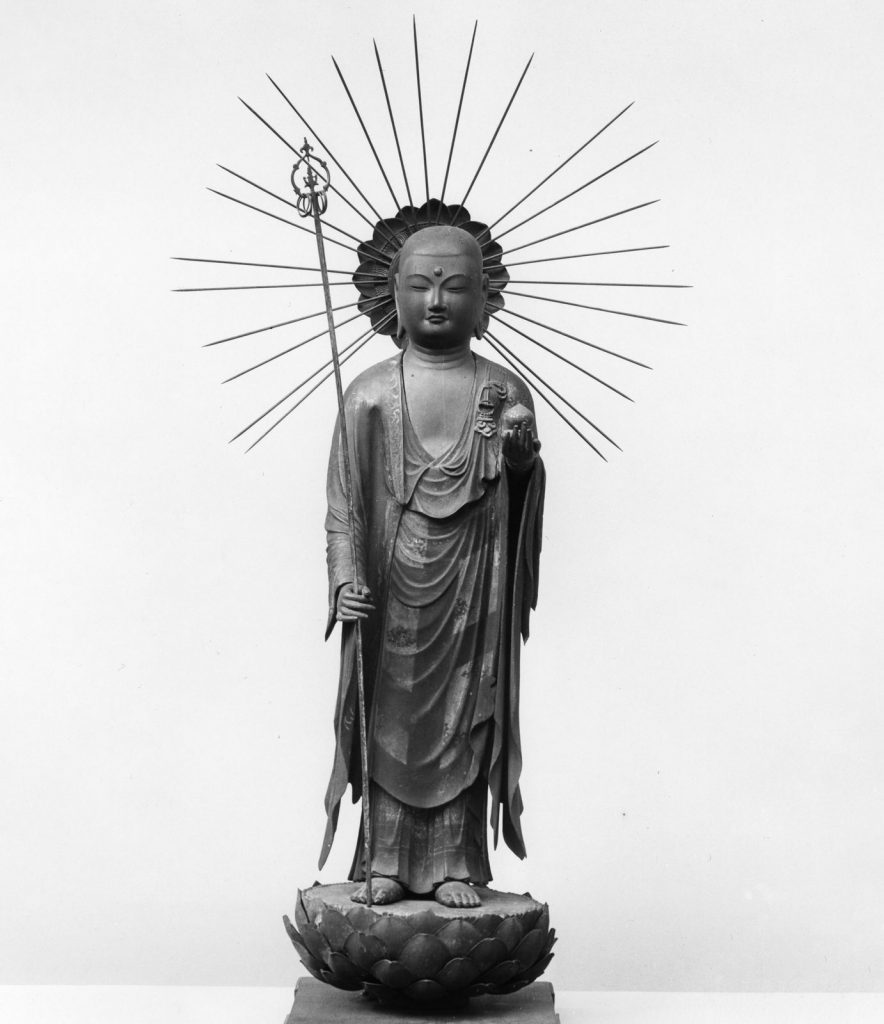Jizo (JPN., “earth womb”) is a bodhisattva known for helping beings in the realms of the dead. Known as Kshitigarbha in Sanskrit and Dizang in Chinese, this bodhisattva often carries a pilgrim’s staff and a cintamani, a gem that can illuminate the darkest corners of hell. He is depicted in a standing posture or, less often, sitting on a lotus. Unlike most bodhisattvas, who are shown wearing richly adorned clothing to indicate their exalted status, Jizo has a shaved head and wears the simple robes of a monk.
In one of his past lives, Jizo was a young woman who traveled to hell to rescue her suffering mother and subsequently vowed to save all beings suffering in these realms. The story became popular, and Jizo became associated with death, dying, and the realms of the dead, including judging the dead and guiding the virtuous to Pure Lands. While death may be the greatest journey, however, Jizo also protects pilgrims and other travelers on their earthly excursions. This explains his simple garb—like those he watches over, he is dressed for a long and arduous trip.
The Kshitigarbha Sutra relates the bodhisattva’s deeds in the various hells, which are described in excruciating detail. It also expounds on the bodhisattva’s filial piety by relating how the Buddha once traveled to a heavenly realm to teach the dharma to his mother. Some chapters describe how rituals should be conducted to honor departed ancestors and pray for fortunate rebirths.
In Japan, Jizo has taken on a special significance as the protector of children, particularly those who have been miscarried, aborted, or stillborn. As part of the mourning ceremony known as Mizuko Kuyo, statues of Jizo are often adorned by grieving parents with children’s accessories, including bibs, caps, and toys. Sometimes six statues of Jizo are presented side by side, representing the six realms from which he can rescue suffering souls.
Thank you for subscribing to Tricycle! As a nonprofit, we depend on readers like you to keep Buddhist teachings and practices widely available.

